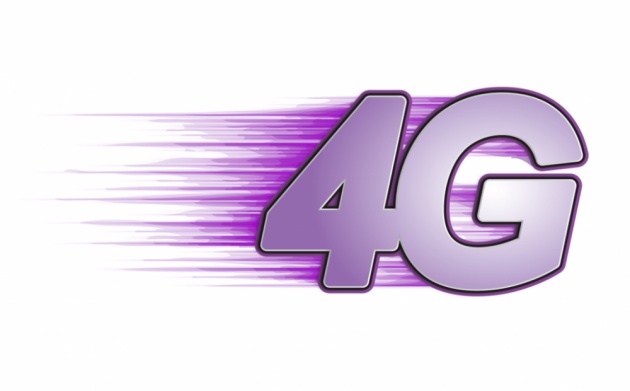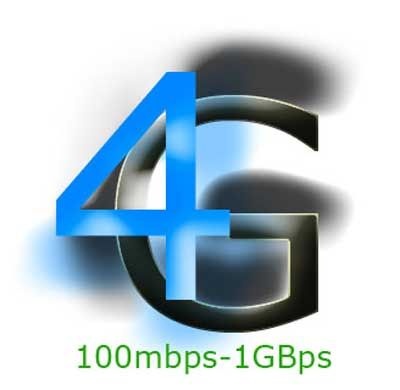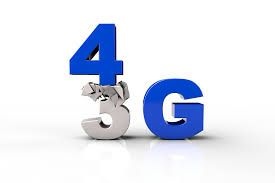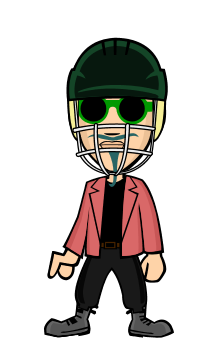DEFINITION OF 4G:
" A mobile communications standard that allows Mobile Phones,Computers, and other portable electronic devices to access the Internet wireleesly. with 4G allowing us to send much bigger files to handsets, video content is the big area that's poised for take-off"
Article:
4G, short for fourth generation, is the fourth generation of mobile telecommunications technology, succeeding 3G and preceding 5G. A 4G system, in addition to the usual voice and other services of 3G, provides mobile broadband Internet access, for example to laptops with wireless modems, to smartphones, and to other mobile devices. Potential and current applications include amended mobile web access, IP telephony, gaming services, high-definition mobile TV, video conferencing, 3D television, and cloud computing.
Two 4G candidate systems are commercially deployed: the Mobile WIMAX standard (first used in South Korea in 2007), and the first-releaseLong Term Evolution (LTE) standard (in Oslo, Norway and Stockholm, Sweden since 2009). It has however been debated if these first-release versions should be considered to be 4G or not, as discussed in the technical definition section below.
In the United States, Sprint (previously Clearwire) has deployed Mobile WIMAX networks since 2008, while Metro PCS became the first operator to offer LTE service in 2010. USB wireless modems were among the first devices able to access these networks, with Wi MAX smartphones becoming available during 2010, and LTE smartphones arriving in 2011. 3G and 4G equipment made for other continents are not always compatible because of different frequency bands. Mobile WiMAX is not available for the European market as of April 2012.

Technical understanding:
In March 2008, the International Telecommunications Union-Radio communications sector (ITU-R) specified a set of requirements for 4G standards, named the International Mobile Telecommunications Advanced (IMT-Advanced) specification, setting peak speed requirements for 4G service at 100 megabits per second (Mbit/s) for high mobility communication (such as from trains and cars) and 1 gigabit per second(Gbit/s) for low mobility communication (such as pedestrians and stationary users).
Since the first-release versions of Mobile WiMAX and LTE support much less than 1 Gbit/s peak bit rate, they are not fully IMT-Advanced compliant, but are often branded 4G by service providers. According to operators, a generation of network refers to the deployment of a new non-backward-compatible technology. On December 6, 2010, ITU-R recognized that these two technologies, as well as other beyond-3G technologies that do not fulfill the IMT-Advanced requirements, could nevertheless be considered "4G", provided they represent forerunners to IMT-Advanced compliant versions and "a substantial level of improvement in performance and capabilities with respect to the initial third generation systems now deployed.
Mobile WiMAX Release 2 (also known as WirelessMAN-Advanced or IEEE 802.16m') and LTE Advanced (LTE-A) are IMT-Advanced compliant backwards compatible versions of the above two systems, standardized during the spring 2011,[citation needed] and promising speeds in the order of 1 Gbit/s. Services were expected in 2013.[needs update]
As opposed to earlier generations, a 4G system does not support traditional circuit-switched telephony service, but all-Internet Protocol (IP) based communication such as IP telephony. As seen below, the spread spectrum radio technology used in 3G systems, is abandoned in all 4G candidate systems and replaced by OFDMA multi-carrier transmission and other frequency-domain equalization (FDE) schemes, making it possible to transfer very high bit rates despite extensive multi-path radio propagation (echoes). The peak bit rate is further improved by smart antenna arrays for multiple-input multiple-output (MIMO) communications.
4G Technology In Pakistan:
On July 7, 2013, the Government of Pakistan announced the auction of 3G/4G operators in Pakistan. On 23 April 2014, the government auctioned of 3G and 4G licenses to cellular service providers raising $1.182 billion in revenues. Zong became the country's first and only company to win a 4G license. Mobilink and Zong bid for the ‘superior’ 10 MHz band, while Telenor andUfone preferred to bid on the cheaper 5 MHz band. Although Mobilink, having acquired the 10 MHz band, qualified for a 4G licence too, they opted not to go all the way.On May 2, 2014, Pakistan Telecommunication Authority allowed Warid Telecom to go public with 4G LTE services. Warid has planned to launch the service.
4G Technology: Advantages and Disadvantages
4G Technology is an up and coming technology. 4G means fourth generation data download speeds. Advantages and Disadvantages are shown below.
Advantages of 4G:
- Quickly download files over a wireless network
- Extremely high voice quality
- Easily access Internet, IM, Social Networks, streaming media, video calling, etc.
- Higher bandwidth
- WIMAX, LTE, and HSPA are all versions of 4G, WIMAX is used by Sprint, LTE is used by Verizon and AT&T, HSPA+ is used by AT&T and T Mobile
- 4G is 10 times faster than 3G
Disadvantages of 4G:
- New frequencies means new components in cell towers.
- Higher data prices for consumers
- Consumer is forced to buy a new device to support the 4G
- It is impossible to make your current equipment compatible with the 4G network
- 4G is only currently available in certain cities within the United States.







